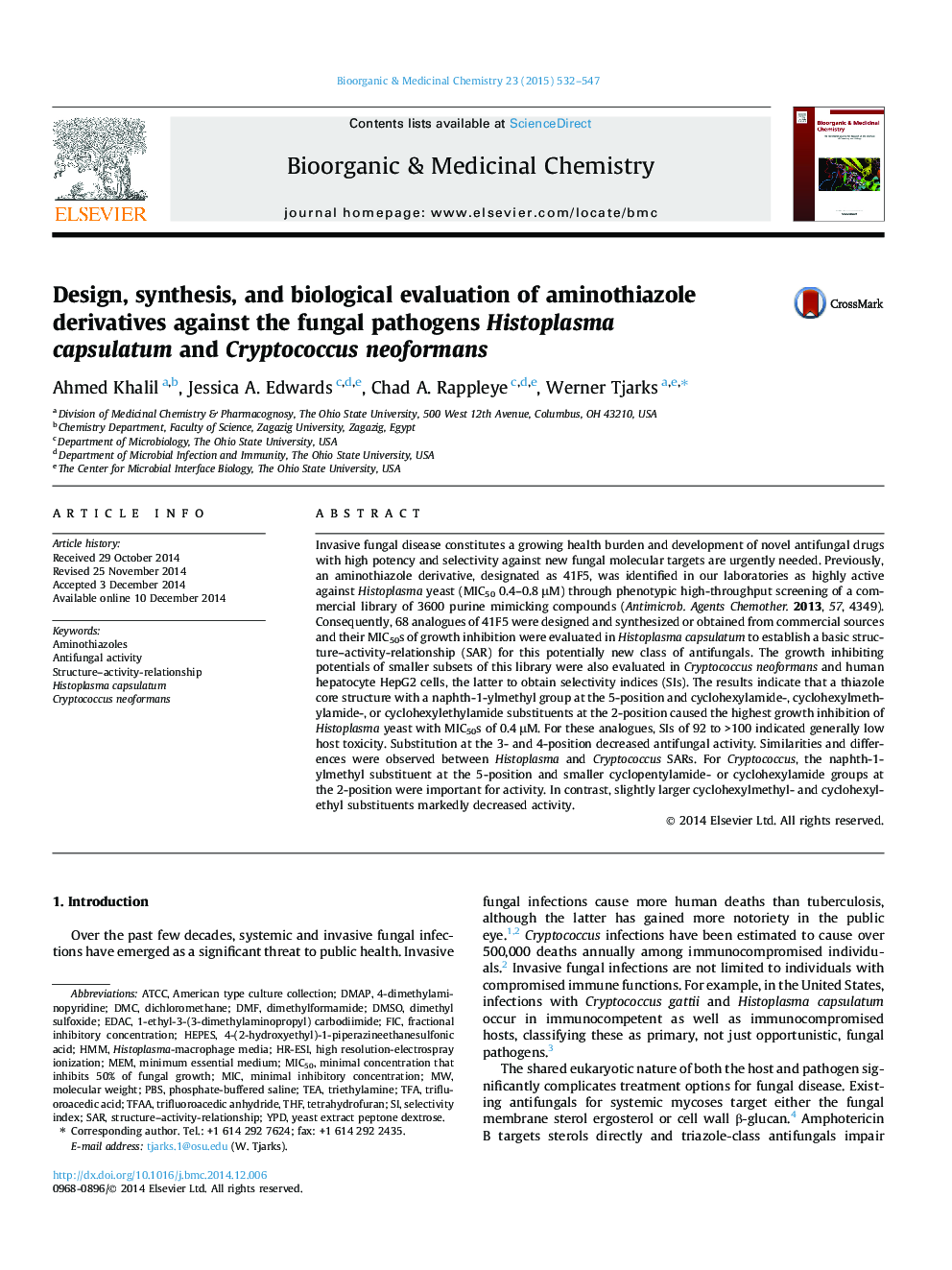| کد مقاله | کد نشریه | سال انتشار | مقاله انگلیسی | نسخه تمام متن |
|---|---|---|---|---|
| 1357970 | 981306 | 2015 | 16 صفحه PDF | دانلود رایگان |
Invasive fungal disease constitutes a growing health burden and development of novel antifungal drugs with high potency and selectivity against new fungal molecular targets are urgently needed. Previously, an aminothiazole derivative, designated as 41F5, was identified in our laboratories as highly active against Histoplasma yeast (MIC50 0.4–0.8 μM) through phenotypic high-throughput screening of a commercial library of 3600 purine mimicking compounds (Antimicrob. Agents Chemother.2013, 57, 4349). Consequently, 68 analogues of 41F5 were designed and synthesized or obtained from commercial sources and their MIC50s of growth inhibition were evaluated in Histoplasma capsulatum to establish a basic structure–activity-relationship (SAR) for this potentially new class of antifungals. The growth inhibiting potentials of smaller subsets of this library were also evaluated in Cryptococcus neoformans and human hepatocyte HepG2 cells, the latter to obtain selectivity indices (SIs). The results indicate that a thiazole core structure with a naphth-1-ylmethyl group at the 5-position and cyclohexylamide-, cyclohexylmethylamide-, or cyclohexylethylamide substituents at the 2-position caused the highest growth inhibition of Histoplasma yeast with MIC50s of 0.4 μM. For these analogues, SIs of 92 to >100 indicated generally low host toxicity. Substitution at the 3- and 4-position decreased antifungal activity. Similarities and differences were observed between Histoplasma and Cryptococcus SARs. For Cryptococcus, the naphth-1-ylmethyl substituent at the 5-position and smaller cyclopentylamide- or cyclohexylamide groups at the 2-position were important for activity. In contrast, slightly larger cyclohexylmethyl- and cyclohexylethyl substituents markedly decreased activity.
Figure optionsDownload as PowerPoint slide
Journal: Bioorganic & Medicinal Chemistry - Volume 23, Issue 3, 1 February 2015, Pages 532–547
